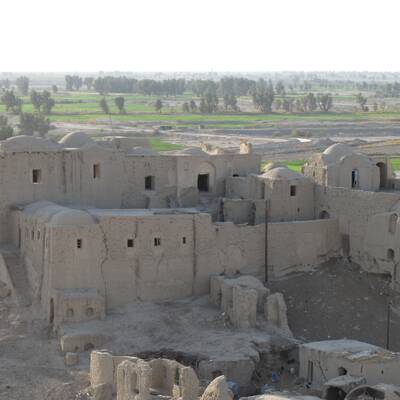Shahr-i Sokhta, one of the wonders in the ancient world, a unique sample of the first, the biggest and the most advanced urban establishments in the southeast of Iran, had been founded along the direction of the Hirmand River to Hamun Lake.
Shahr-i Sokhta and its civilization, with more than 5000 years history, as a scientific, industrial, social, cultural and artistic center, was an archaeological site in the Bronze Age.
The establishment here initiated from 3200 BC and the archaeologists found the traces of four phases of life up to 1800 BC.
Shahr-i Sokhta is composed of five sectors including the residential area in the northeast of the city; the central part; industrial zone; historical monuments; and cemetery; all are observable as a series of sequential and connected hills.
The following highly diverse archaeological findings in the city indicate the existence of a rich and powerful civilization there: Sokhta palace, so-called "Staircase" houses, the first brain surgery, the first artificial eye in the world, the first motion picture, a wooden ruler, chess and backgammon, jewelry, regular water supply system and wastewater discharge, industries as textile weaving, spinning, woodturning, marquetry, marble making, fishing net weaving, pottery, seal making, mat weaving and making metal tools.
This city is one of the few ancient cities in which women were financially responsible for their families. The name of site is not only derived from a change in the direction of Hirmand River and continuous droughts that followed it, but also from periodic conflagrations here.




.jpg)
